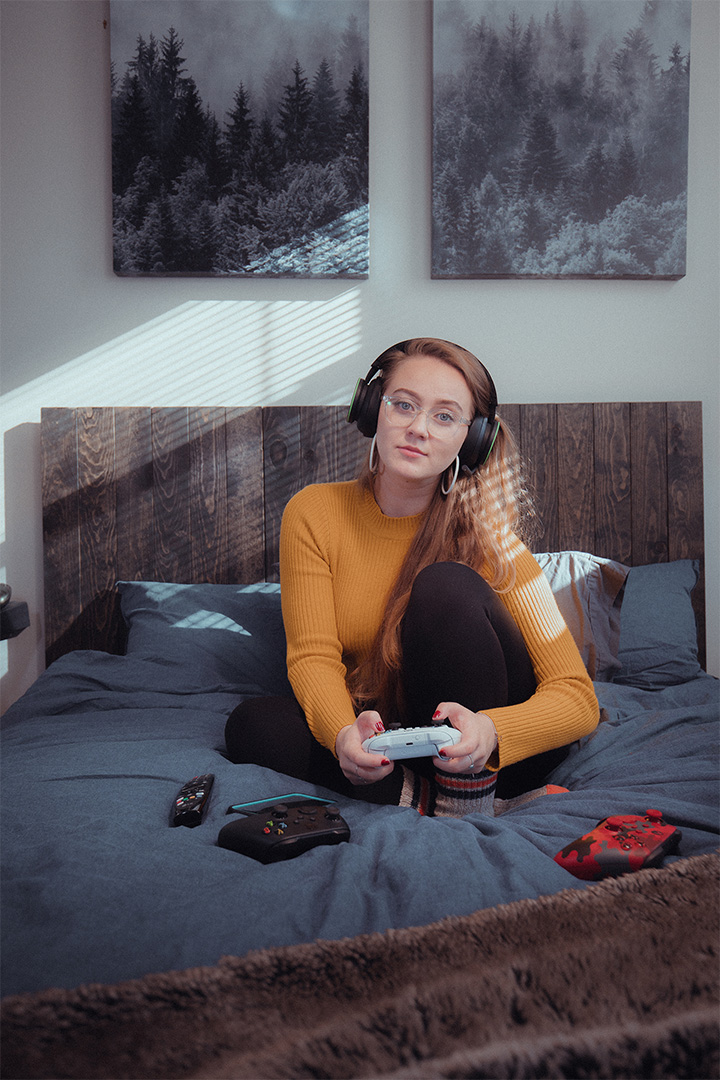Throughout the history of home video game consoles, hardware manufacturers have competed directly with one another in fierce battles for technological supremacy.
Occasionally you have consoles that decide to embrace novelty rather than power to try to carve out their own niches, but most hardware generations have seen systems that were on pretty equal footing, all things considered. Sure, one particular console might have a larger pool of memory, a bit more power, or offer slightly higher frame rates and resolutions, but as technology has advanced, the differences between consoles has become more about numbers on paper versus vastly divergent experiences when gaming.
As we approached the current generation, everything seemed to be going as expected. Microsoft revealed the Xbox Series X, an amazing new system that was capable of running games its predecessor, the Xbox One, could never have dreamed of. Soon after, Sony announced the PlayStation 5, the latest in the company’s line of consoles that promised to run rings around the PlayStation 4. The stage was set, and two new titans would take up arms to fight in the console wars.
And then, Microsoft shocked the world with the reveal of a second new console: the Xbox Series S.
The “smallest Xbox ever” would play all of the same games as the Xbox Series X, giving players experiences that were never before possible, but it’d do all of that while targeting a wider audience. For the first time since the earliest video game consoles hit the market, a system would be available in two totally different configurations in terms of internal hardware right from launch—and that one decision by Microsoft and the Xbox team just may have changed gaming forever.

“In the past, consoles often did not become an affordable option for many users until later into the generation,” explained Bree Adams, senior marketing manager at Xbox. “This time around, we wanted to have a product for those gamers right from the start with Xbox Series S in addition to the more premium experience available with Xbox Series X.”
Throughout the history of gaming consoles, going for the cheaper option has often meant getting a lesser experience. In the earlier days, cost-cutting measures resulted in products like the redesigned “top loader” NES that had lower-quality video output, or the Genesis 2 and its noticeable reduction in audio clarity. In more modern times, previously existing functions like hardware features, backward compatibility, and accessory support are some of the things that have been removed to lower production costs.
It’s not surprising that some might equate “more affordable” with “lower quality” when it comes to gaming hardware, but the past two years have shown that to absolutely not be the case with the Xbox Series S. Yes, it has limitations, most notably its focus on resolutions up to 1440p rather than 4K and its smaller internal storage compared to the Xbox Series X. If we’re honest about those limitations, though, then we should be equally honest about the console’s strengths—and it’s become clear that there are many.
So, over the next four pages, let’s talk about some of the ways the Xbox Series S has grown to become a powerful and versatile member of the new generation of gaming—along with some of the people who can most benefit from all it has to offer.
Beyond everything else, the biggest strength of the Xbox Series S is clear: It’s a lower-priced option for participating in a new era of consoles far sooner than some consumers might otherwise be able to. And, in an unexpected twist, it’s also offered that ability thanks to being the most widely available new-gen hardware during worldwide technology shortages. As electronic devices across the industry have faced manufacturing issues, Microsoft’s design of the Series S has meant it’s been easier to produce with consistency.

The thing is, bringing more players to new hardware isn’t just about those players—it’s also about game developers. The more people own a particular system, the more potential customers a new title will have. So, while producing two different tiers of Xbox Series hardware was certainly a risky bet, it was one made with multiple groups in mind.
“Two consoles at launch was definitely ambitious,” Adams agreed. “The best news for our game creators was we knew that having a lower price console at launch that could run Generation 9 games well would help them (and us) make gaming more accessible to even more gamers around the world.”
If there’s any segment of the market that the Xbox Series S seems perfectly targeted toward, it’s casual gamers. While some of us stress over teraflops and memory bandwidth and compute cycles, the majority of players just want something to play video games on. And, while plenty of us have upgraded to breathtaking 4K televisions, there are still a large number of people happily gaming away on the small screen on their desk or the 1080p television in the living room.
“Xbox Series S is for anyone who wants a next generation gaming experience at a great value, prioritizes framerate over 4K display, and prefers their games in a digital format,” said Adams.
That last point is actually an important one when talking about more casual gamers. Sure, some love owning shelves full of physical games, but in an era when so many of us have smartphones full of downloaded apps, quick access to a digital library of titles can sometimes be the best solution. And, these days, it’s easier than ever to get games digitally, from using the Microsoft Store right on the Series S itself, to picking up digital download cards during a shopping trip to Walmart.
These days, in addition to buying games either physically or digitally, it’s impossible to talk about Xbox without bringing up Game Pass, the platform’s gaming subscription service that has completely shaken up the industry.
“When gamers pair their Xbox Series S with our gaming subscription Xbox Game Pass, they’ll get access to hundreds of high quality games, including Day One releases from Xbox Game Studios,” said Adams. “Game Pass is a great way to try out new titles and genres for solo adventurers, and for those who love to play games with friends.”

Now, of course, Game Pass is also available on the Xbox Series X, but it becomes an especially powerful option for families when paired with an Xbox Series S. As children, many of us only received a small handful of new games a year, as that was all our families could afford. Now, with the lower-priced Series S and a subscription to Game Pass, your household can have access to hundreds of games to play every month. And, even better, all members of the family are sure to be able to find something to play, meaning the adults can have just as much fun with that Series S sitting in the family room as their kids do.
The final strength of the Xbox Series S we’d like to point out is one of the most surprising—and interesting—factors that has revealed itself over the past few years: the console’s portability.
At some point, every console is portable, even the mighty NeoGeo. However, the design of the Xbox Series S has made it incredibly easy to pick up and take with you, no matter if you’re moving it to another room or another country. Because of that, the system has become popular in the days since it launched as a way to take your gaming with you wherever you go.
“We’ve heard from customers that it’s pretty common to move a game console between rooms in a house, or between houses,” Xbox principal designer Chris Kujawski told us. “Being able to easily fit [the Xbox Series S] in a bag and take it with you is another bonus to this really compact form factor.”
No matter if you easily fit into one of the categories we’ve featured here, or your wants and needs as a gamer are of a different nature, there’s no better time to check out the Xbox Series S than right now. What started out as a risky and potentially underpowered next-gen console has grown into a bold new option for gaming that’s rife with benefits—ones that countless players have already discovered.
“Xbox Series S has been well received by gamers around the world,” Adams added. “We have millions of gamers playing on our Series X|S consoles, and we look forward to welcoming millions more in the years to come.”